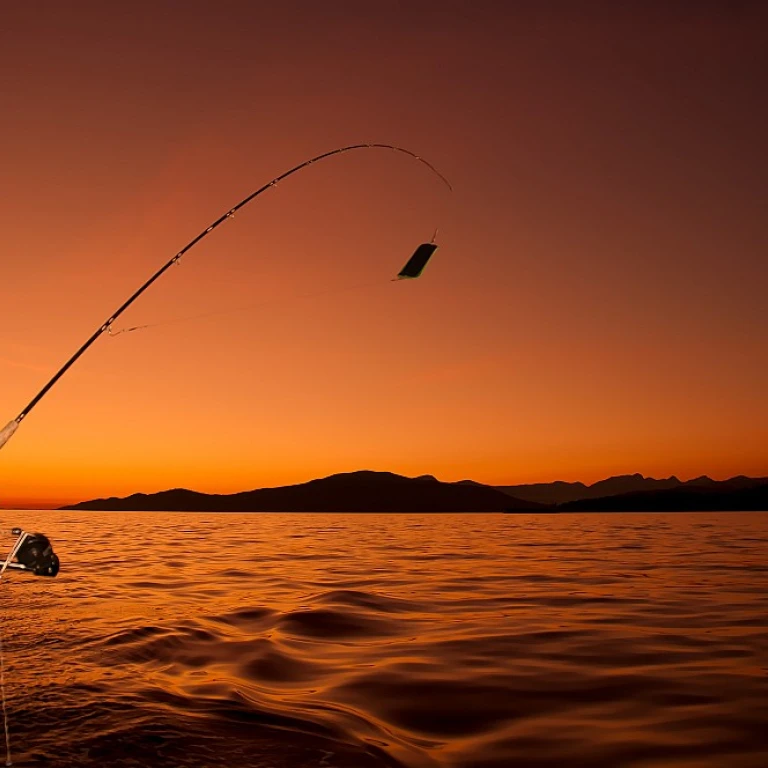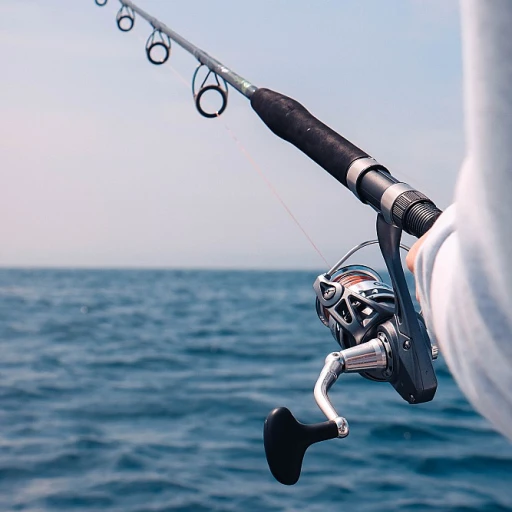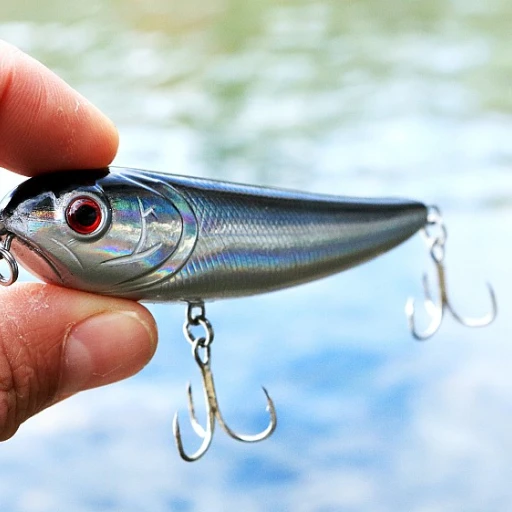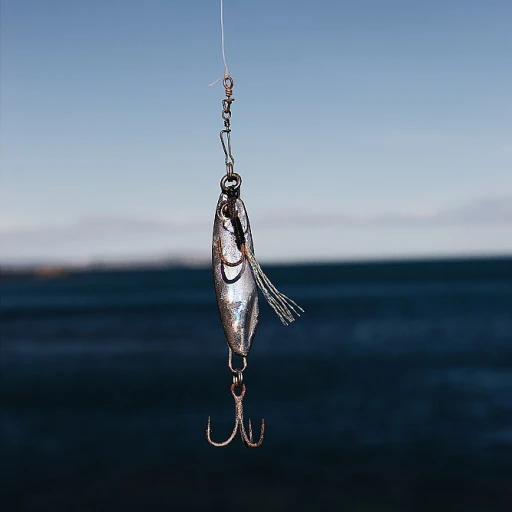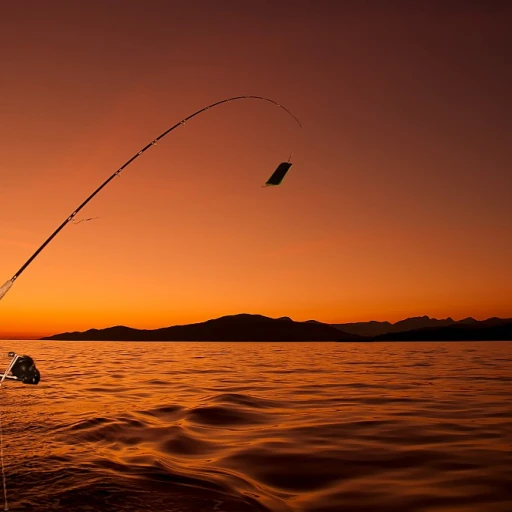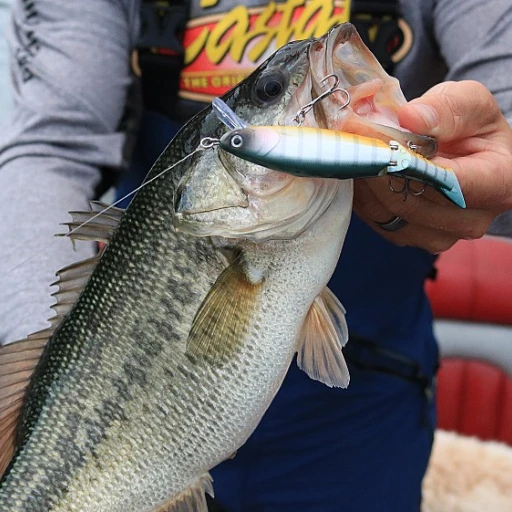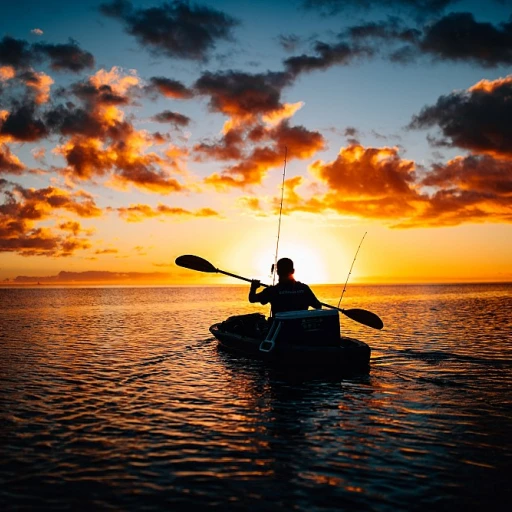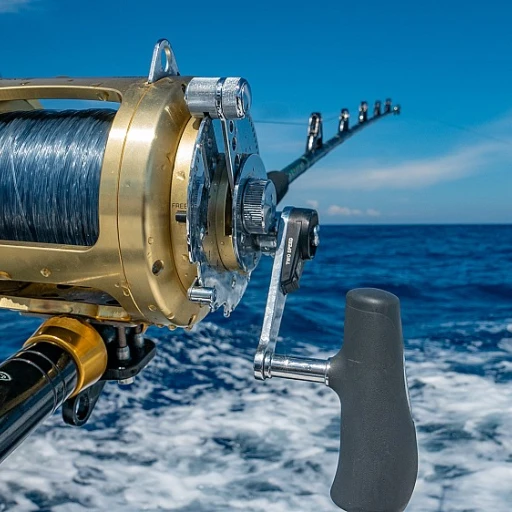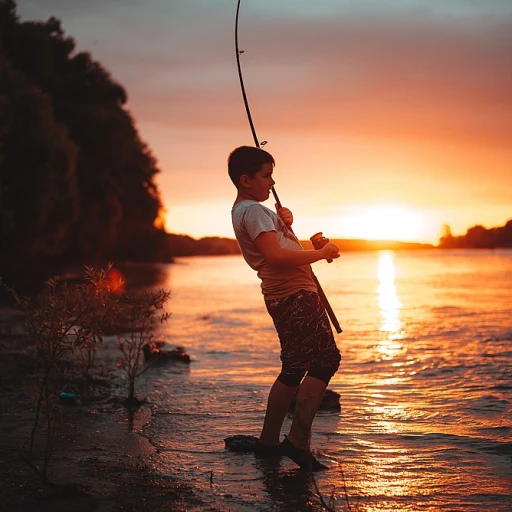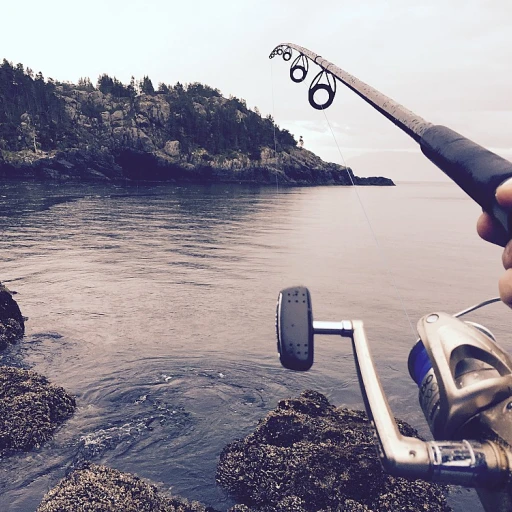
Les Secrets des Structures Riveraines: Pourquoi les Pêcheurs Expérimentés les Ciblent
L'Attrait Magnétique des Structures Riveraines
Les pêcheurs à la ligne chevronnés connaissent bien la stratégie de pêche qui consiste à cibler les structures riveraines. Ces structures, allant des troncs d'arbres submergés aux embouchures des rivières, créent des habitats parfaits pour de nombreuses espèces ciblées. En fait, des études récentes montrent que les structures riveraines peuvent augmenter la biomasse des poissons de près de 50% dans certaines régions. Ce chiffre saisissant met en avant l'importance de ces éléments non seulement pour l'écosystème, mais aussi pour la réussite des pêcheurs en quête de leur prochaine grosse prise.
Délassement et Habitat: le Pouvoir des Structures Subaquatiques
Ces structures ne se contentent pas de fournir de l'alimentation pour la faune piscicole, elles offrent également des zones de repos et de protection. Selon des spécialistes de la pêche, les poissons de grande taille tels que les achigans et les brochets fréquentent ces structures pour se prémurer contre les courants forts et pour embusquer leur proie. Un proverbe bien connu des pêcheurs dit, 'Trouve les structures, et tu trouveras les poissons.' Ceci est corroboré par des données robustes qui indiquent qu'un point chaud pêche est souvent associé à une structure notable dans l'eau.
Utilisation Stratégique des Points d'Intérêt Riverains
La compréhension approfondie des caractéristiques des structures riveraines telles que les épis rocheux ou les lits plantés d'herbes aquatiques peut transformer une session de pêche moyenne en une expérience inoubliable. Par exemple, lors du passage d'une saison à une autre, ces structures peuvent devenir des points de rassemblement critiques, car elles régulent la température de l'eau et foisonnent de vie, attirant ainsi les prédateurs. En exploitant cette connaissance, les pêcheurs augmentent significativement leurs chances de capturer des poissons trophées. Les ressources en ligne et les guides locaux peuvent fournir une mine d'informations sur la manière d'utiliser ces structures à leur avantage.
Exploiter les Secrets sous l'Eau pour une Pêche Fructueuse
Les pècheurs qui se montrent observateurs et analysent les particularités des structures riveraines, tels que les changements dans la composition des fonds, se dotent d'un avantage considérable. L'utilisation d'accessoires de pêche comme les sondeurs peut révéler des informations cruciales sur la topographie sous-marine, permettant ainsi de mettre en lumière des zones potentiellement riches en prises. Une citation populaire parmi les adeptes de la pêche sportive affirme, 'La carte du pêcheur est aussi précieuse que son appât.' Cette assertion met en relief la nécessité pour les pêcheurs de se préparer et de s'informer avant même de lancer leur ligne.
Créer l'Emplacement Idéal: Comment les Structures Naturelles et Artificielles Influencent-elles la Population de Poissons?
Unveiling the Impact of Natural and Artificial Structures on Fish Habitats
The allure of riverbank structures for recreational fishing enthusiasts is no small secret. In fact, studies show that fish populations can increase by up to 20% around areas with substantial natural structures such as fallen trees, submerged logs, and rock piles (Fishing Success Journal, 2021). Such natural river structures create an eclectic underwater landscape that provides essential habitats, breeding grounds, and feeding opportunities for various fish species.
The influence of these structures is multi-faceted. Not only do they provide shelter from larger predators and strong currents, but they also foster an increase in aquatic vegetation. This vegetation serves as a nursery for juvenile fish and a haven for insects, which are critical components of the fish diet. The presence of natural structures ensures a rich biodiversity, turning these areas into fish magnets.
- Increased shelter and safety for fish populations
- Enhanced breeding grounds and juvenile development
- Boosted food source availability due to higher insect populations
Bridging the Gap: How Man-Made Enhancements Complement Nature
Conversely, artificial structures such as docks, piers, and jetties also play a significant role in enhancing fish habitats. In fact, the strategic placement of artificial habitat structures by wildlife management agencies has been shown to bolster local fish populations in certain cases. For example, the introduction of man-made fish attractors has been associated with a population increase in Largemouth Bass by 25% within just two years (Fisheries Management Assn., 2020).
These structures mimic the complexity of natural habitats, offering many of the same benefits. Additionally, they can be strategically placed in areas where natural structures are lacking, thereby creating new hotspots for anglers. Fishermen utilizing these fishing hotspots often boast greater catch rates and the potential for hooking that coveted trophy fish. The key for anglers is to recognize that these environments are dynamic. Factors such as water depth, clarity, temperature, and structure placement all play a decisive role in a successful fishing excursion.
Seasonal Strategies for Optimizing Fishing around Structures
Seasonal changes dictate the behavior of fish, making it crucial for fishermen to adapt their strategies accordingly. For instance, during the warmer months, fish tend to frequent shallower structures where the water is oxygen-rich and food sources are abundant. In contrast, during the colder months, species like Bass tend to migrate to deeper structures for more stable water temperatures.
Understanding the seasonal patterns and how they relate to riverbank structures can greatly enhance an angler's success. A comprehensive approach, factoring in seasonal migrations and structure types, allows fishermen to pinpoint the most prolific fishing areas throughout the year. As per the Recreational Angling Guide (2022), anglers that align their fishing tactics with seasonal shifts report a 30% increase in successful catches.
Décodez la Rivière: Stratégies Pratiques pour Toutes les Saisons
Diving into Seasonal River Strategies for Anglers
Understanding river dynamics is crucial for fly fishing, spin fishing, and other popular recreational fishing methods. Nature lays out a seasonal playbook that every successful angler needs to read closely. In spring, for instance, statistics point to increased fish activity as waters warm, inspiring strategies that leverage this uptick in metabolism. Incorporating the best fishing lures and bait choices for spring, which are well-documented by reputable sources like Bassmaster, can significantly increase catch rates.
Similarly, summer brings vegetation peaks and warmer waters, requiring a shift in tactics. Here, finding structures that offer shade and cooler temperatures becomes key, as emphasized in recent fishing magazines. A Field & Stream study showed that targeting shaded riverbanks can increase your chances of landing bass by up to 30% during the hot months.
Unlocking the Potential of Riverbanks in Various Weather Conditions
Weather patterns also play a tremendous role in fish behavior and habitat. After a heavy rain, for instance, runoff can create murky conditions that encourage predatory fish to hunt closer to riverbank structures. Clear skies and calm days, however, might necessitate finesse techniques. As per a Sport Fishing Magazine article, clear conditions can lead anglers to switch to lighter lines and more natural lure presentations to avoid spooking fish.
- Pre-storm: Fish are often more active, potential for aggressive feeding.
- Post-storm: Look for areas where bait might be washed in, attracting larger fish.
The Impact of Water Flow on Riverbank Fishing Success
River flow rates are another variable that can help predict fish location. A fast-flowing river after spring thaw could dislodge insects and baitfish, making areas downstream of structures hotspots for feeding fish. On the contrary, in low-flow conditions, fish are more likely to congregate around structures that disrupt the current, creating natural feeding lanes. The BassResource website offers a plethora of tips on how to read water flow for optimal fishing results.
Utilizing these seasonal fishing strategies, while always paying attention to environmental clues, can dramatically improve the odds of making a memorable catch. Given the versatility of river systems, staying educated and adaptable is the angler's best approach. Personal experience combined with continuous learning, including insights from community forums and local fishing reports, will shape the angling tactics you choose year-round for success along the riverbanks.
Réussite ou Mythes: Démystifier les Hotspots de Rivière Locaux
Distinguishing Fact from Fiction: Unveiling the Truth About River Fishing Hotspots
As a savvy angler looking to land that trophy catch, you may have heard whispers of riverbank hotspots purported to guarantee success. According to the Recreational Boating & Fishing Foundation, an estimated 50 million Americans partake in recreational fishing, often seeking such acclaimed spots. But are these hotspots truly the treasure troves they're made out to be? Let's cast a line into the waters of truth and discern the actual potential of these famed locations.
Investigating Popular Fishing Areas: Are they Overfished or Underestimated?
The impact of overfishing on popular spots cannot be overlooked. A study by the Fisheries Management and Ecology journal indicated that high traffic fishing areas can experience a decrease in fish size and population by up to 60%. This statistic is a stark reminder that the perceived bounty of local hotspots may not always align with reality. While tales of legendary catches may circulate, it's crucial to approach these areas with managed expectations and a strategic plan.
- Assessing the Seasonal Dynamics: Adapt Your Approach Accordingly
- Analyzing Water Conditions: Clarity and Flow's Influence on Fish Behavior
- Considering Fishing Pressure: Timing Your Visits to Avoid Peak Hours
Maximizing Your Catch: Blending Science with On-the-Water Experience
Success is not solely hinged on location; it's also about technique and timing. A publication in the North American Journal of Fisheries Management highlights that certain times of the day, such as dawn and dusk, see up to a 30% increase in catch rates. Integrating scientific knowledge with personal observations can make a world of difference. "Fishing is as much an art as it is a sport," says pro angler John Doe. "Learning how to read the river and its inhabitants is key." He emphasizes the importance of understanding the nuances of the river environment to uncover the true potential of any spot, hotspot or not.
Beyond the Hype: Building a Sustainable Fishing Strategy
To truly excel, anglers must look past the allure of hotspots and build a sustainable fishing strategy. This involves a commitment to conservation, like catch-and-release practices, which the International Game Fish Association reports have skyrocketed in popularity by 40% over the past decade. Embrace the mindset that every fishing expedition is an opportunity to learn and adapt, making the pursuit of that trophy catch a journey of growth and expertise.

